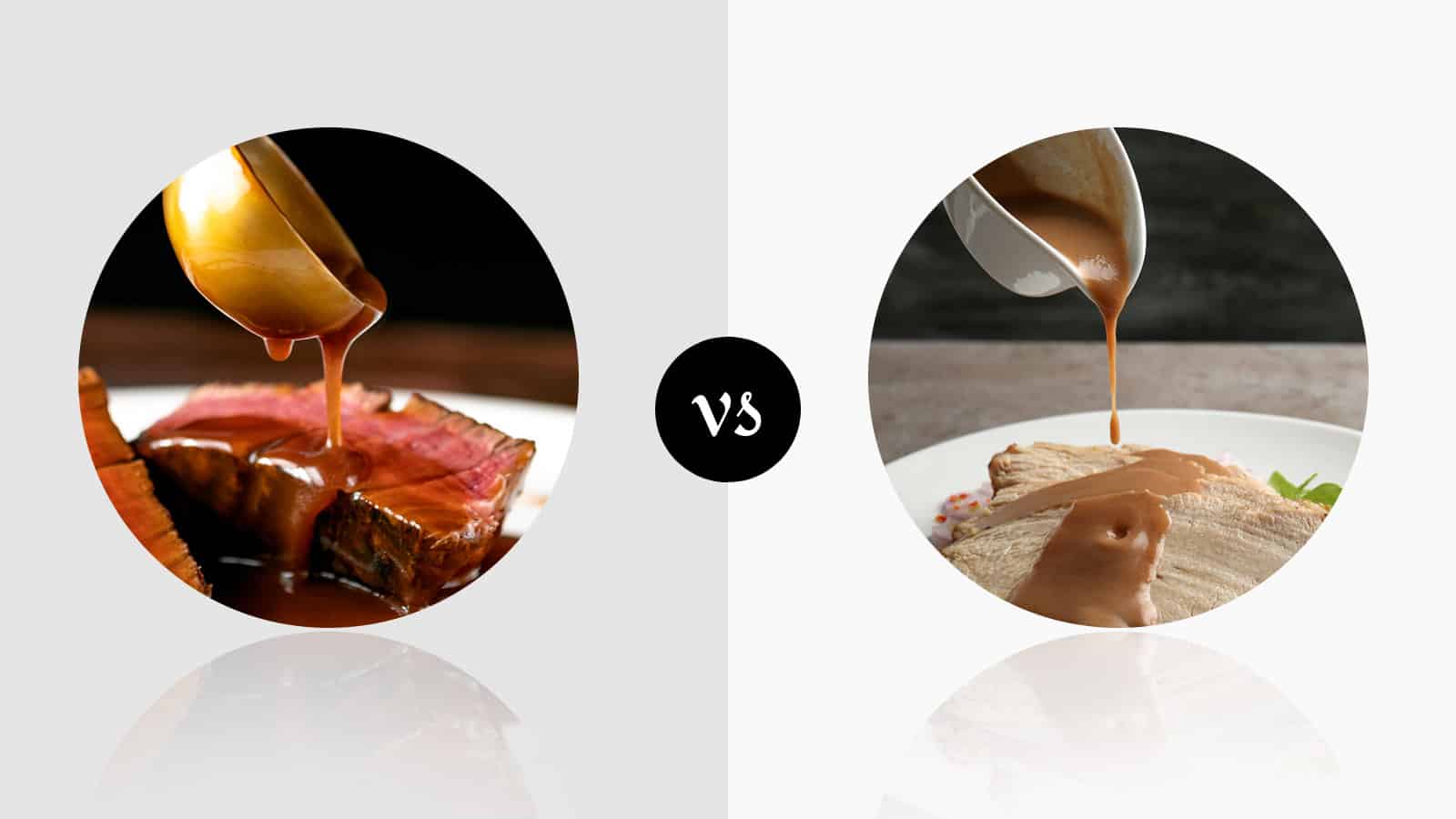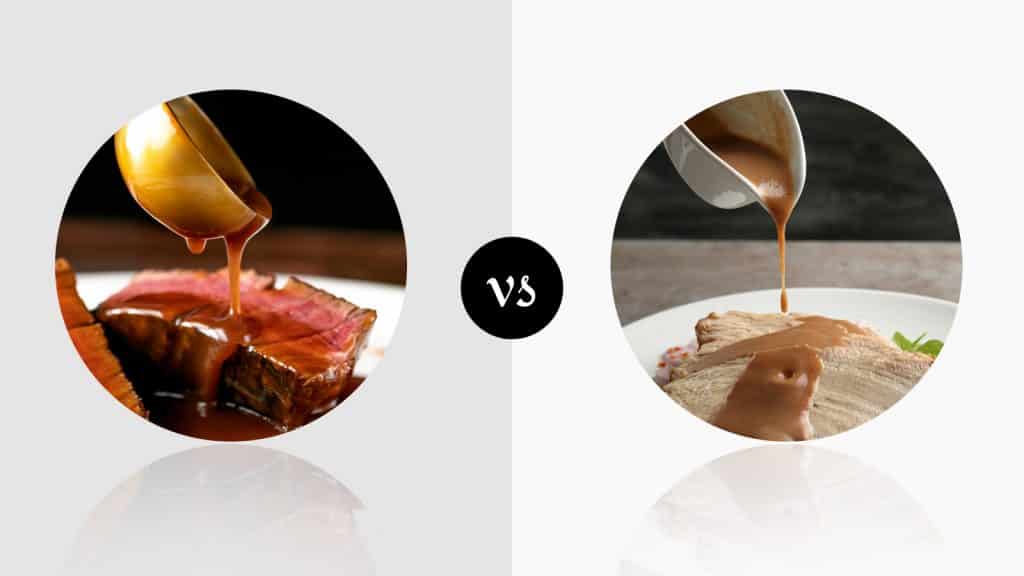
Few of us can go a day without savory food. Our stomachs cry out for a full, hearty meal after a hectic day, or it feels like a lackluster day wasted. There’s often nothing better than a simple helping of frozen or refrigerated gravy heated up to piping hot and served over fresh rice or a roast.
Gravy is something that most of us are more than familiar with and an essential part of many dinners. The basic components of gravy include stock with or without meat juices, seasoning, and a thickening agent like flour.
Demi-glace is a core component of many classic sauces and is strikingly similar to gravy but still an ingredient of its own. Here’s a complete breakdown of demi-glace vs. gravy so that you always know which is which and when to use either variety.
Demi-Glace Vs. Gravy Comparison
| Demi-Glace | Gravy | |
|---|---|---|
| Definition | Derivative Rich Meaty Sauce Of Espagnole Composed Of Brown Sauce, Brown Stock And Tomato Paste Reduced With Sherry | Sauce Made From Cooked Meat Drippings That's Thickened Once Cooked To Stock |
| Ingredients | Brown Stock, Espagnole Sauce, Clarified Butter, Black Peppercorns, Carrot, Onion, Celery, Parsley, Thyme, Bay Leaf, Tomato Puree | Meat Juices, Onions, Salt Garlic, Wine, Flour, Cornflour |
| Method | Bones Baked Then Cooked To Stock Over 7 Hours+ With Vegetables And Seasoning Before Deglazing With Sherry Or Wine Then Mixture Of Espagnole With Stock And Tomato Puree Before Reduction To Thick, Glutinous Sauce | Dripping Accumulated Then Thinned With Water And Flavored With Vegetables, After Reduction, Gravy Thickened With Flour Or Starch |
| Flavor | Bold, Rich Beefy Flavor, Intensely Meaty | Mildly Beefy Flavor, Extremely Versatile Boldness |
| Consistency | Extremely Thick With Jelly-Like Glutinous Consistency That Forms Semi-Solid When Cooled And Melts When Warmed | Thick But Pourable With Velvety Richness |
| Uses | Sauce, Sauce Additive, Flavor Enhancer, Thickener, Gravy, Gravy Additive | All Types Of Meat, Served As Gravy Atop Rice & Mash, Served On Pasta, Flavor Enhancer For Soups & Stews, Sauce For French Fries |
| Availability | Difficult To Make And Gourmet Ingredient - Limited Availability | Broad Availability, Easy To Make And Sold In Most Stores |
| Storage | 2 Weeks Refrigerated, 6 Months Frozen | 2-3 Days Refrigerated, 3 Months Frozen |
Demi-Glace Vs. Gravy
We’re pretty sure you’ve tasted both at some point and ended up devouring your plate because of either ingredient. After all, demi-glace and gravy are crucial to so many forms of well-cooked comfort food.
Never be confused over which is which again after reading our upcoming comparison of demi-glace vs. gravy.
Demi-Glace
First, I need to clarify that demi-glace isn’t gravy, juices, or a stock but is instead a rich brown sauce that’s often used as a base for other sauces thanks to just how rich and flavorful it is. Here’s a breakdown of demi-glace, what it’s made from, the flavor to expect, and how it’s best used.
Definition
Demi-glace is a direct derivative of Espagnole, one of the core five French sauces.
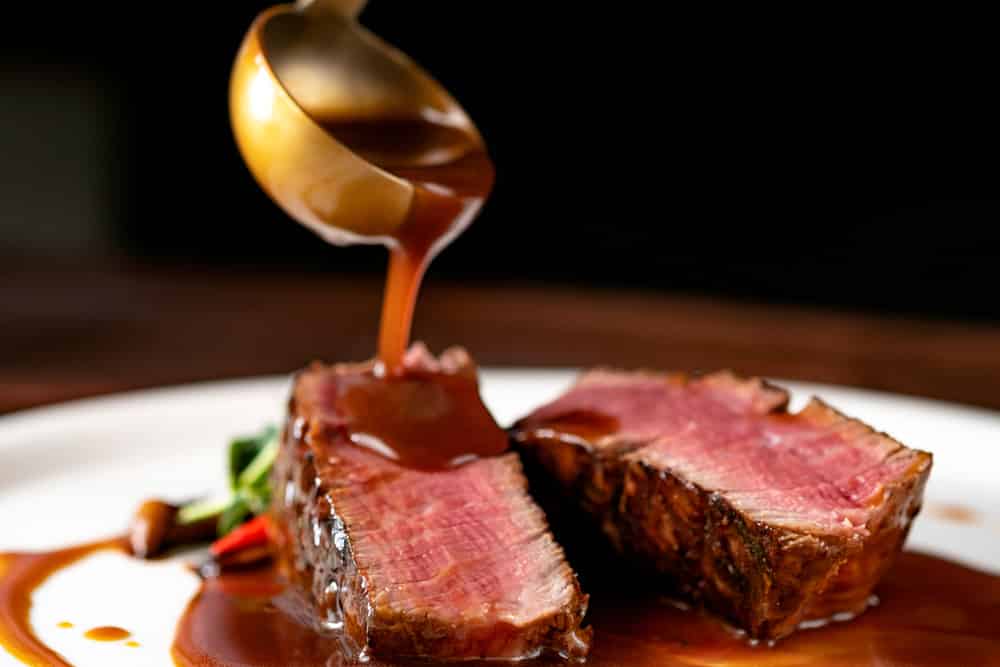
As a result, this decadent meat sauce is composed of Auguste Escoffier’s basic brown sauce, which is essentially a very dark roux blended with brown stock and tomato paste that is then further combined and reduced with brown stock and sherry.
Ingredients
French demi-glace is made from Espagnole and brown stock traditionally using veal. However, today demi-glace can be made from just about any stock, including beef and chicken.
The Espagnole is made from brown stock, onion, carrot, celery, clarified butter, black peppercorns, parsley, thyme, bay leaf, and tomato puree.
Equal parts of Espagnole sauce are combined with equal parts brown stock (typically beef or beal), dried thyme, fresh parsley, black peppercorns, and bay leaf.
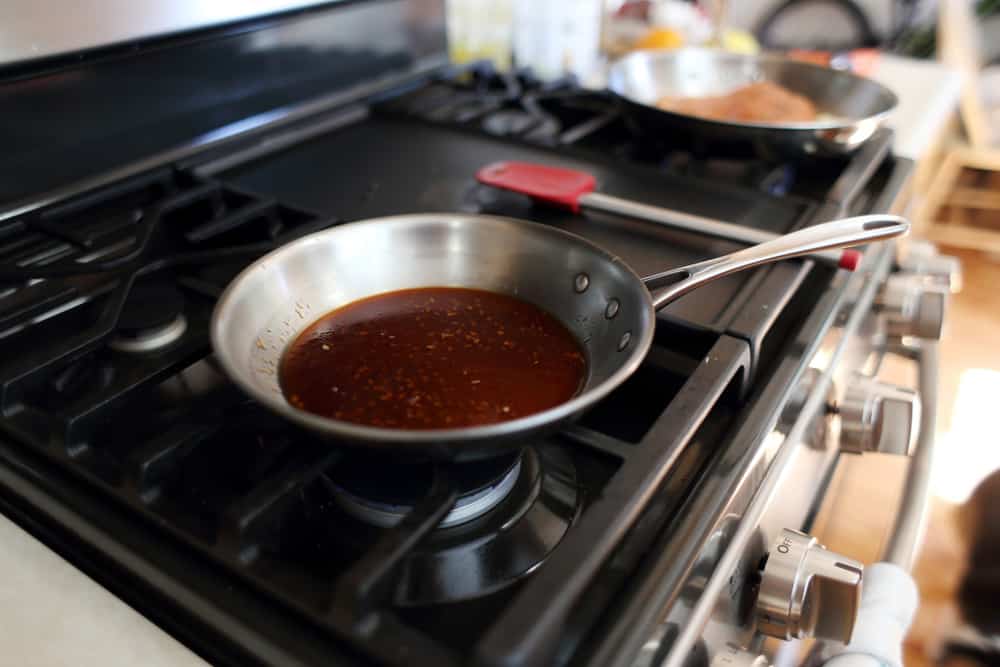
Method
Veal, beef, or chicken bones are baked in an oven for an hour. Onions, carrots, and celery are sauteed, then coated with tomato paste and baked for half an hour. The bones and onions, carrots, and celery mix is known as mirepoix in French are added to a pot of simmering water.
After deglazing the roasting pan with red wine or sherry, then deglazing is added to the bones and mirepoix, which are then simmered for at least eight hours. After eight hours or more of simmering, the mixture is strained, and the brown stock is then ready.
In continuation, the vegetables of the Espagnole sauce are sauteed lightly before the flour is stirred in to create a paste forming the roux. As soon as the roux begins to brown, stock and tomato puree are whisked in until completely combined.
The raw herbs are folded into cheesecloth and tied. Once the roux and stock begin to boil, the sachet of herbs is lowered into the pot, and the mixture is then simmered for around an hour or until reduced to a third of its volume.
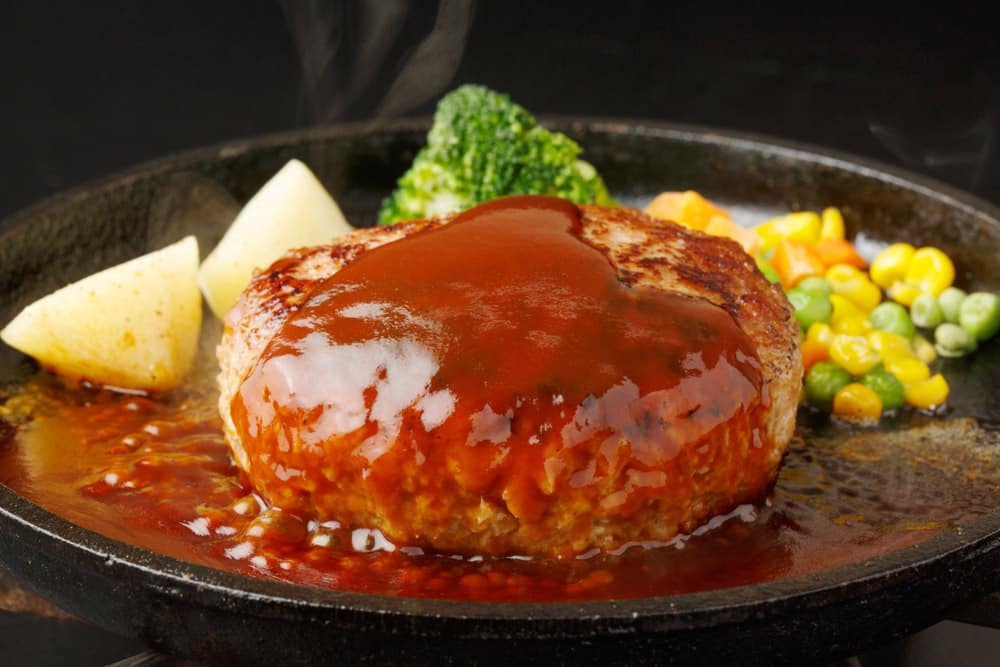
Once reduced, the top is skimmed of impurities, and then the sauce is strained.
Strained Espagnole sauce is combined in a pot with the stock made earlier (again typically beef or veal) and brought to the boil with a cheesecloth bag containing thyme, parsley, peppercorns, and bay leaf once again lowered in.
The demi-glace then cooks for 45 minutes to an hour or until the volume has been reduced by half. Finally, the demi-glace is strained before being ready to serve.
Flavor
Expect some of the richest, meatiest flavors possible from demi-glace. As a sauce that concentrates two types of stock-based sauce, the taste of the meat in use is brought out boldly.
It’s a savory taste sensation with a silky richness and buttery quality to the iron-like aftertaste present in each bite.
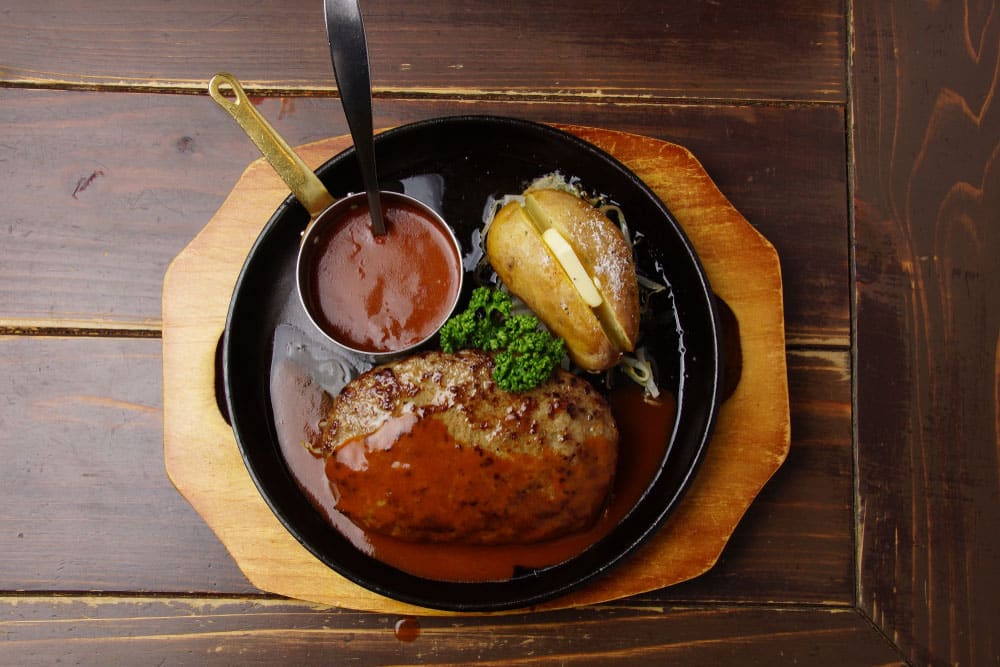
Consistency
Once properly prepared, demi-glace is an extremely thick, ultra-rich sauce with a jelly-like consistency. When left to cool, demi-glace forms a semi-solid rubbery compound that liquidizes once melted. The longer the demi-glace has been reduced, the better and the more gelatinous it becomes.
Uses
Demi-glace is extremely versatile, carrying all the uses of gravy and a good sauce. Demi-glace acts as a base sauce but can be used alone as a sauce or gravy as well. Try adding it to all your favorite meaty dishes as a flavor enhancer, or use demi-glace to thicken soups and stews.
In the mood for the tastiest rice or mash around? Serve up a bowl covered in demi-glace. You’ll also be blown away by just how well this secret ingredient of restaurants works for lifting the taste and texture of all your favorite sauces.
Availability
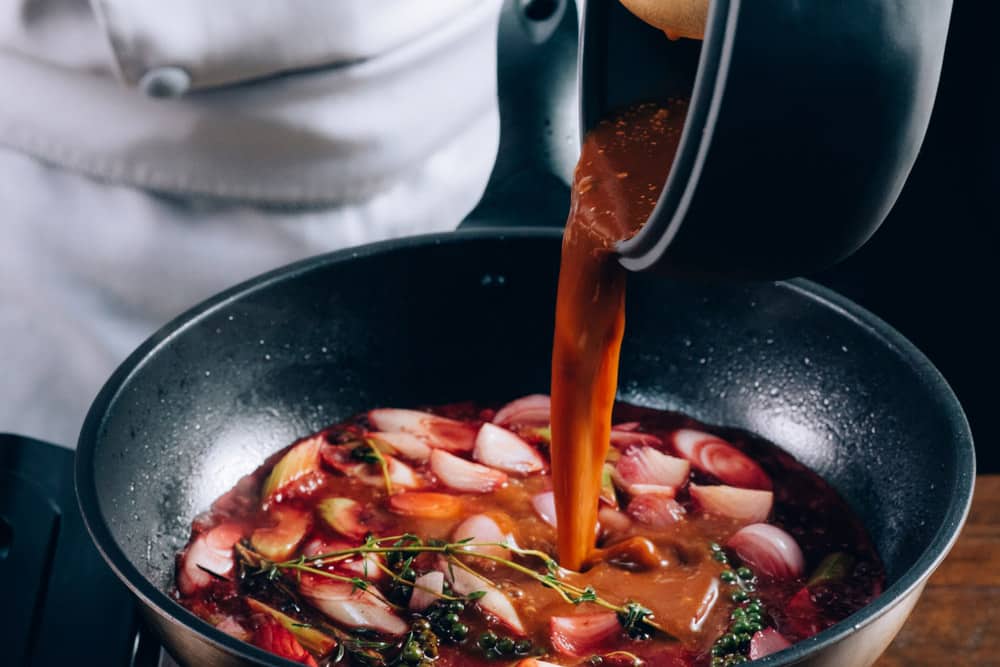
Due to how time and labor-intensive making demi-glace is, it’s not something that you find in every kitchen. Only restaurants and dedicated chefs generally undertake the arduous process of making demi-glace.
However, there are demi-glace servings commercially available at a relatively high price compared to most gravies and sauces common to the average grocery store.
Storage
Making demi-glace normally results in a massive batch supplying far more sauce than is immediately needed. Fortunately, demi-glace freezes well and will last for months without spoiling. You’ll get 2 weeks from refrigerated demi-glace and 6 months when frozen.
Gravy
Some families enjoy gravy so much that many people end up considering it a beverage. Let’s delve closer into what makes gravy such a popular part of our meals.
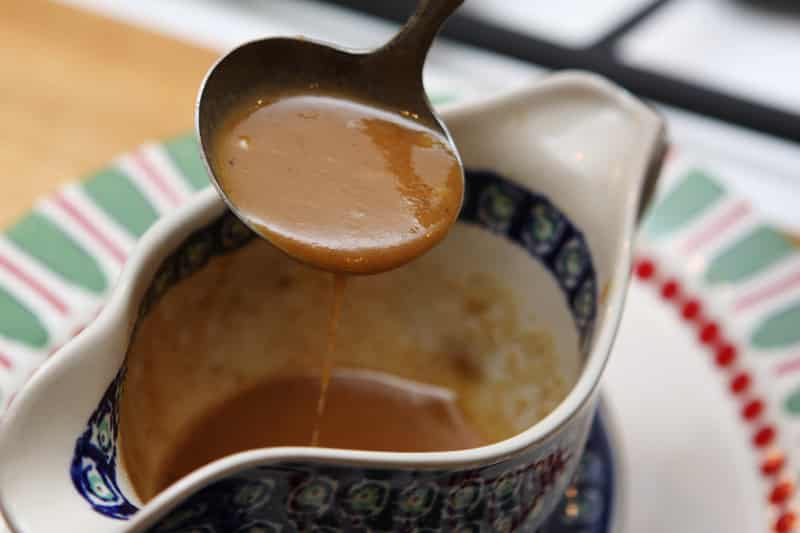
Definition
Gravy is a sauce that is made from the thickened juices that arise when cooking meat or other ingredients.
Most gravy uses flour or cornstarch as its thickener, while the term ‘gravy’ differentiates the meat-based sauce derived from roasting meat called gravy from a sauce that doesn’t necessarily need to include meat by default.
Ingredients
There are many different types of gravy, but all are made from the juices of meat such as beef, poultry, pork, lamb, or mutton and vegetables like onions and garlic, which are cooked to stock and then thickened with flour, cornflour, or another thickener.
Gravy can also include wine, various forms of stock, eggs, and an array of herbs and spices that suit the flavor profile intended.
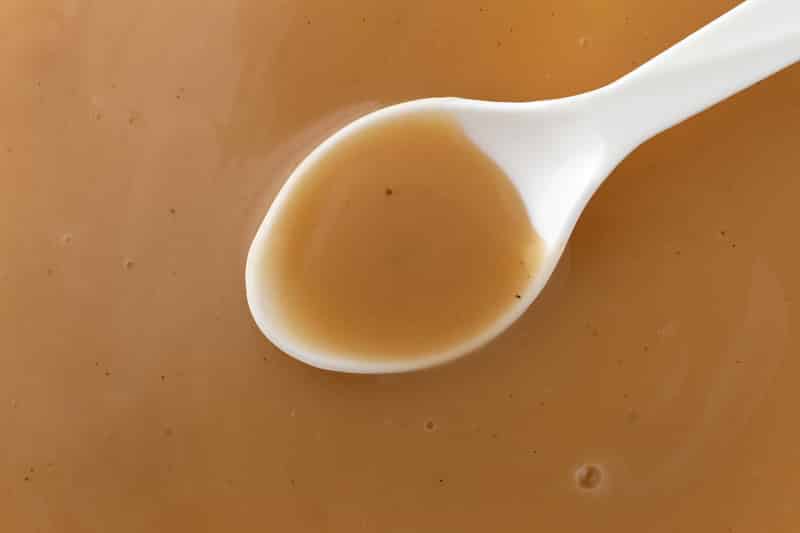
Method
Although making the stock can be a time-consuming process if the chef follows a complex method or recipe, making gravy is as simple as accumulating the drippings from roasted meat or fowl. These drippings are then cooked in a pot or pan with onions and other vegetables, and water.
Once infused, the gravy is thickened with wheat flour or cornstarch and then allowed to cook for a minute or two until done.
Many cooks resort to bullion cubes or granules to speed up the making of gravy instead of resorting to homemade stock, bone broth, or other meat-based sauce like demi-glace as a base.
Flavor
The flavor of gravy depends on what it’s made from. This being said, most people referring to gravy are discussing the classic brown sauce served over meat and made from beef drippings or brown stock.
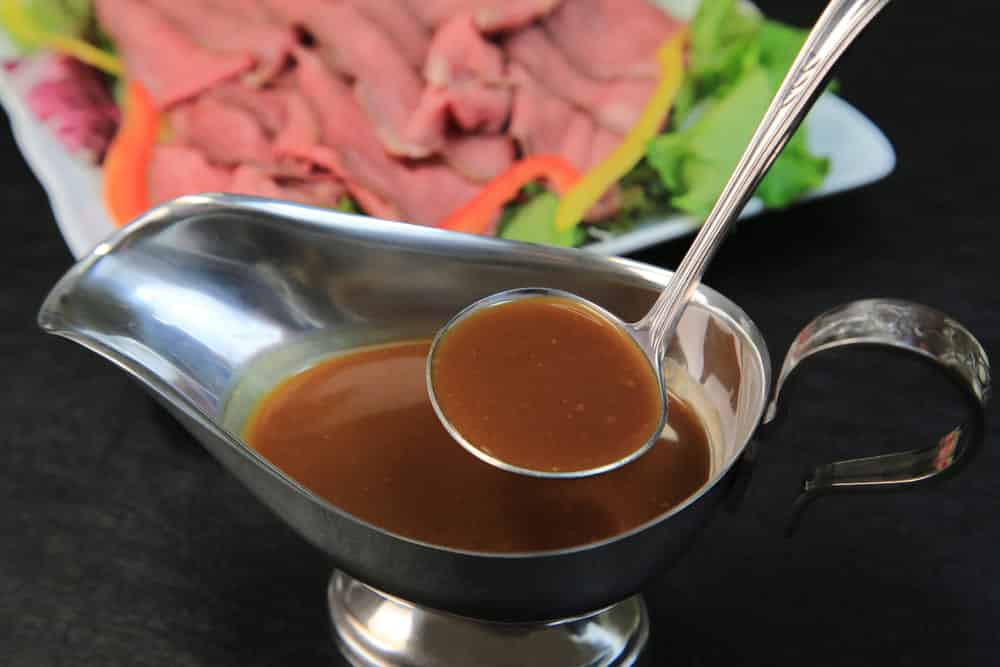
Expect a mild beefy taste with subdued flavor notes that are less intense than demi-glace with less depth of flavor. Even though a lighter, savory flavor is supplied, the less prominent beefiness makes gravy more versatile than demi-glace in certain applications.
Consistency
Most gravies are thick but pourable. The consistency should be thinner than demi-glace but thicker than a condiment like a tomato sauce or ketchup.
A velvety rich thickness should be expected from gravy, with a consistency that’s not quite firm enough to be anywhere near gelatinous but at the same time not so runny that it doesn’t congeal upon whatever is being served.
Uses
Gravy goes great with all forms of roasted, grilled, baked, or fried meat. From steaks to stews, gravy is a winner. Just like demi-glace, it’s equally as tasty on boiled rice and freshly made mashed potatoes.

A little gravy adds depth of flavor to soups and stews, and you’ll be surprised time and time again by just how well leftover gravy pairs with certain types of pasta. Give ketchup a break and try some leftover gravy on fries – it may just become your new favorite.
Availability
There’s no other sauce that’s quite as easy to make as gravy. This makes it highly accessible.
Those making gravy at home have an endless variety of recipes to pick from, whereas shoppers will be happy to know that gravy is cheaply available in everything from instant gravy powders that you simply mix with hot water to pre-made gourmet gravy ready to heat and serve.
Storage
Gravy will generally only last for two to three days in the fridge, but when frozen, it’ll stay safe for consumption for up to three months.
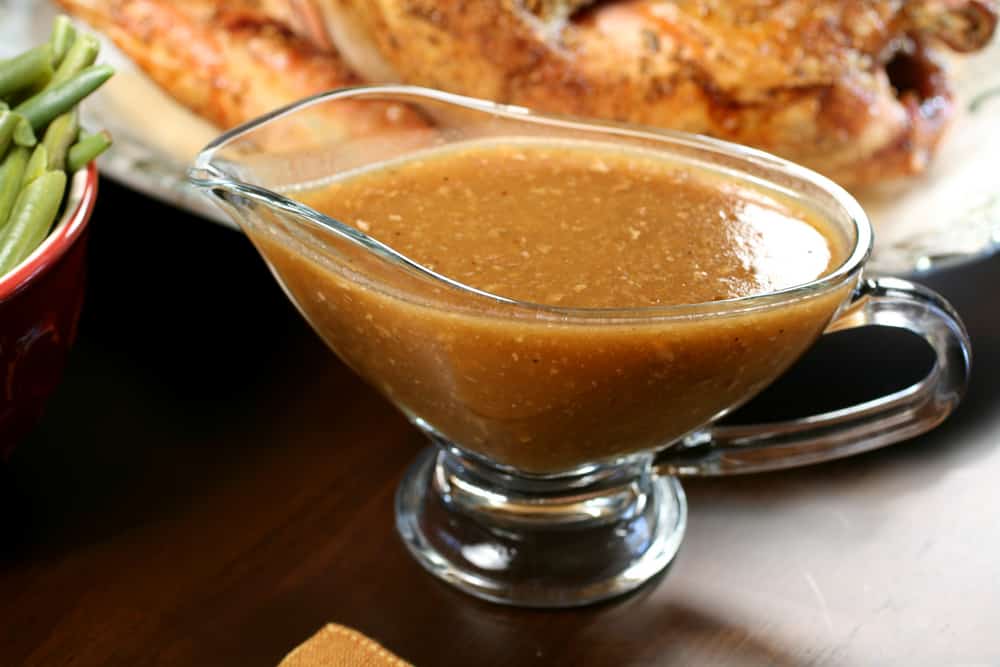
What Is The Difference Between Demi-Glace Vs. Gravy?
Demi-glace is a complex, flavorful sauce requiring extensive preparation and cooking time that’s made from the classic French sauce Espagnole and brown stock, whereas gravy is a quick sauce prepared from meat drippings combined with vegetables and seasoning that are briefly cooked into stock, and then thickened.
Demi-Glace Vs. Gravy, Final Thoughts
Making savory food taste amazing calls for know-how concerning all your basic ingredients. Both gravy and demi-glace have extensive uses and serve as tasty standalone sauces while enriching the flavor of any dishes they’re added to.
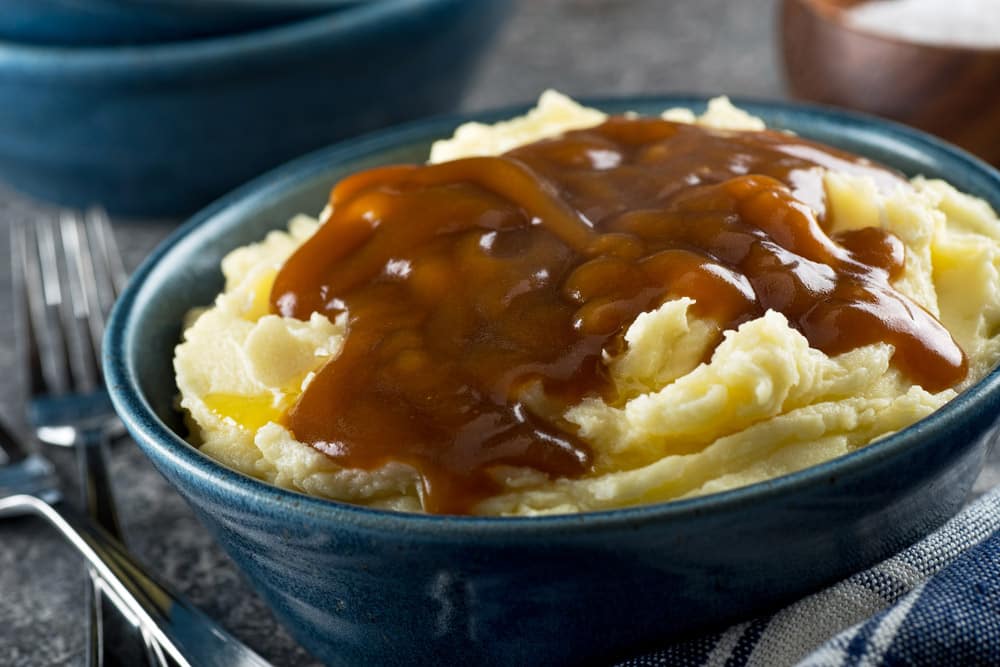
When it comes to which is best between demi-glace vs. gravy, it all depends on how much time you have and what you’re serving or making.
The tastiest gravies will include demi-glace, but the gelatinous consistency of the tastier, more complicated alternative doesn’t always suit simple meals like French fries. Use whichever you like best, and be sure to enjoy your meal!
